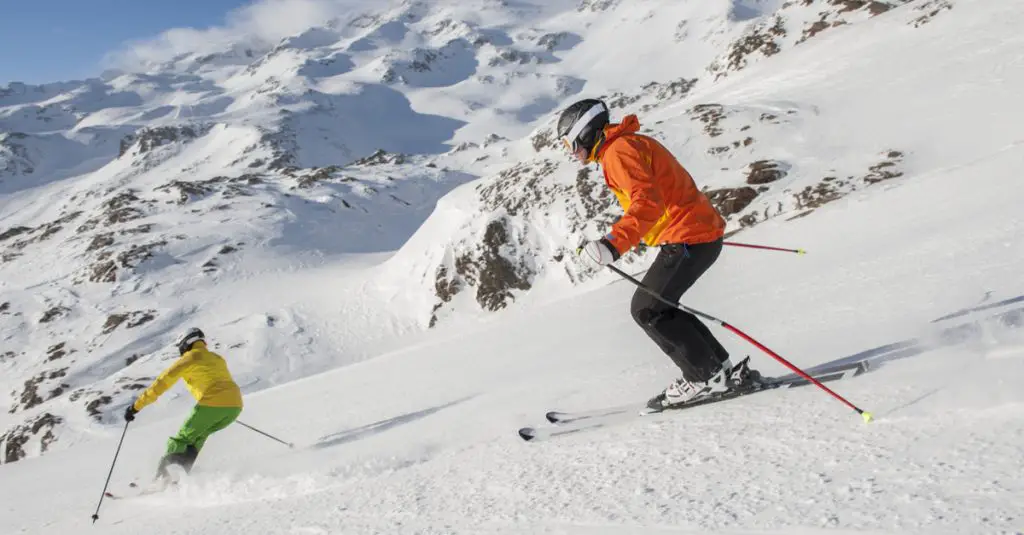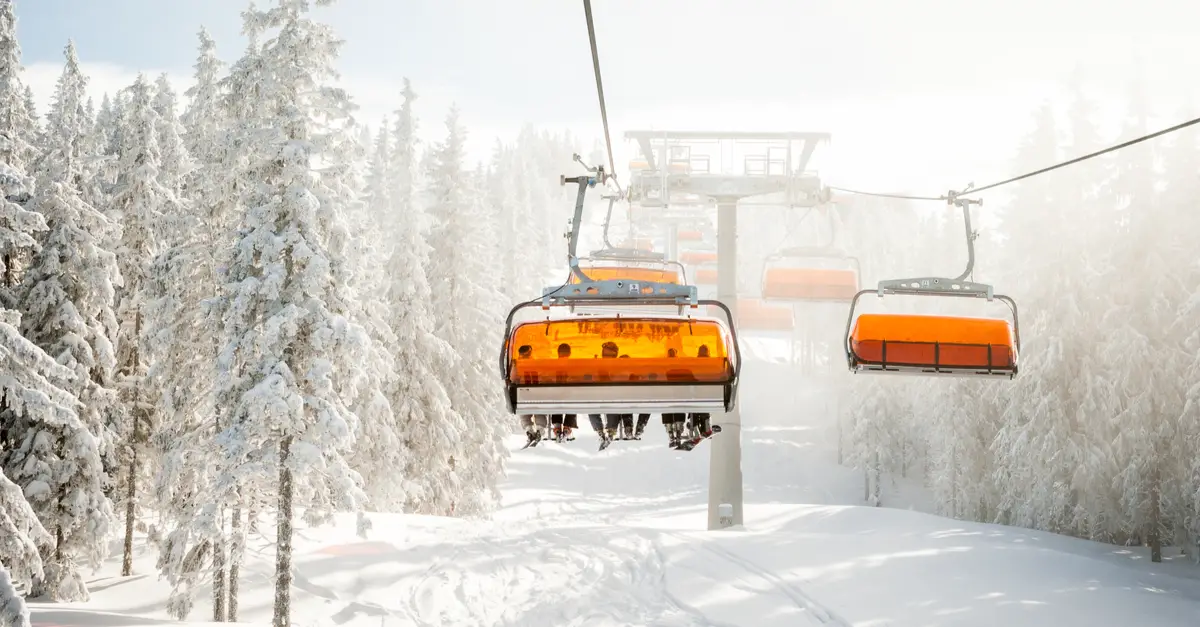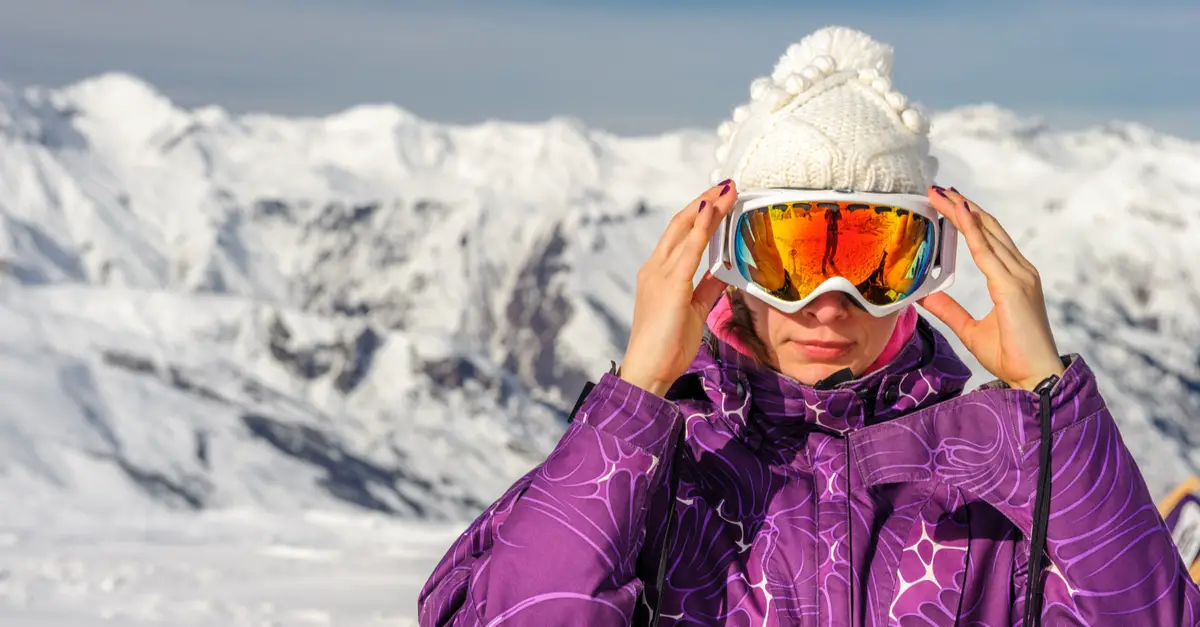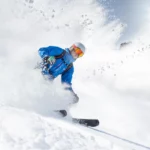5 Expert Tips for Beginner Skiers


Once your hotel is booked and your trip is planned, all that’s left before your ski trip begins is to get pumped for the upcoming adventure. However, it’s not unusual for beginners to feel excitement to turn to apprehension as their on the hill approaches. Skiing can be an intimidating sport, especially when it seems like everyone on the slopes is better than you. Add in cold weather, physical challenges and the risk of getting injured, and it’s no surprise that so many people choose to relax in the base lodges rather than hitting the slopes.
But there’s actually no reason to miss out on the fun. Skiing is a sport for everyone, from the tiniest toddlers to people who have been retired for 20 years. With the right training, dedication, support and willingness to fall a bit, anyone can learn both to ski and have fun doing it. Rather than learning from experience, here are some of the most important expert tips for beginner skiers to help make your first few days of skiing more enjoyable.
Practice good ski etiquette
Just like there are a few unspoken rules of the road when driving, there are also rules for skiing. Knowing basic mountain etiquette will go a long way in making your day a bit more fun (and ensuring hardcore skiers don’t yell at you for making a rookie move).
Right of way
The person in front always has the right of way. As a beginner skier, you’ll probably get passed often by more advanced skiers. To be considerate, try to avoid stopping and making sudden turns in tight spots, like on narrow roads, and try not to stop in blind areas or spots where people won’t be able to see you from above. This is especially true in terrain parks: whatever you do, don’t stop at the bottom of a jump. As you become a better skier and encounter more novice powder hounds, you’ll appreciate the importance of these safety considerations.
On the lifts
Once you’re on the lift, don’t immediately pull the bar down. You’ll likely slam it into at least one of your fellow skiers’ heads. Instead, wait until everyone is on the lift and ask something along the lines of “bar?” before pulling it down.
At the top, when it’s time to get off, let your fellow lift chair passengers know which way you plan to go so you don’t cut in front of them. And finally, feel free to let them know you’re a beginner skier. More advanced skiers are usually happy to quickly get off the lifts to give you more time and space to make a slow exit off the chair.

Dress properly
You certainly don’t need to go out and buy a brand-new backcountry ski suit. Most expensive ski jackets and pants are made for extremely snowy, cold and windy conditions, which probably isn’t what you’ll encounter as a beginner. But don’t make the rookie mistake of wearing jeans. Not only are they not wind- or snow-proof, but they absorb water like crazy. You don’t want to be soaking wet and cold after your first fall, so opt for something with some level of waterproof protection. Thin windbreaker-type pants usually work fine for beginners, so long as you layer something warm and quick-drying underneath, like a wool or synthetic base layer.
Wear a helmet and the right goggles
It’s not cool to skip the helmet. In fact, most serous skiers will tell you that going without a helmet is incredibly stupid and will mark you as someone who has no clue what they’re doing. Goggles can be a bit trickier to figure out as the best lens color for any given day depends on the weather. You won’t be able to see very well if your lenses are the wrong tint (for example, a very light tint on a sunny day), so ask the resort’s local ski shop what they recommend, or consider renting rather than buying for your first few days on the slopes.
Be good to yourself
Know your own limits. If you’re on a five-day ski trip, you don’t need to ski nine hours in a day. In fact, that’s a great way to push yourself to the point where you’re too tired and too frustrated to want to hit the slopes again the next day. Take your time, take breaks and stop for the day when you’re exhausted. Tired legs are more likely to make mistakes that lead to injury.
If you live at or near sea level, be aware of the changes you’ll experience at high elevation. Expect to become tired and dehydrated much quicker than normal. You may find that your muscles hurt a bit more than expected, too. That’s because your muscles receive less oxygen than usual at higher elevation. Be sure not to push yourself too hard unless you want sore legs the next day.

Recover from a fall
Falling is an essential part of learning to ski – after all, if you aren’t falling, you aren’t pushing yourself. Even experts fall with some regularity. It can be tricky to get up again once you’ve taken a spill, especially if you’re on a steep slope. But a few basic tips can help make it a lot easier.
If you’ve fallen and your skis came off in the snow around you (known as a “yard sale”), stand up and gather your gear; don’t try to put your skis back on while you’re still standing. Step to the side of the trail and take your time stepping back in. If your skis didn’t come off, flip yourself over so your skis are facing downhill (you may need to awkwardly flop across the snow, which is fine.) Sit on one hip and use your poles to push yourself back up into a standing position. This will likely be difficult and frustrating at first, so try to scoot to the side whenever possible to avoid blocking the trail.
In the end, practice makes perfect. The only way to improve your skills is to hit the slopes. And remember: even if you’ve skied a few times before, it never hurts to sign up for a lesson.




